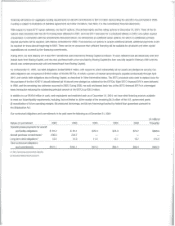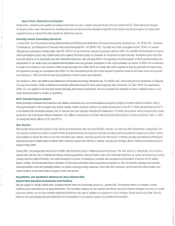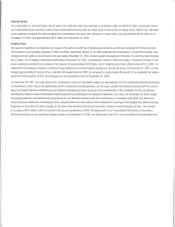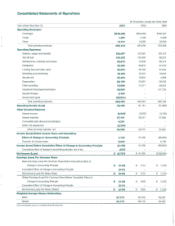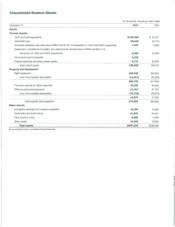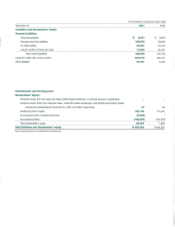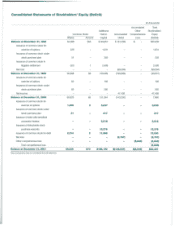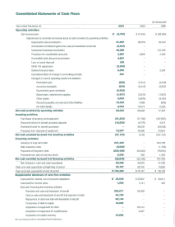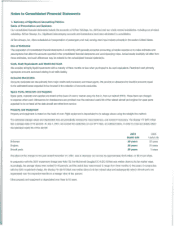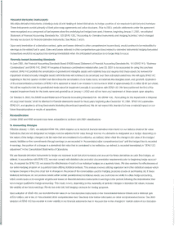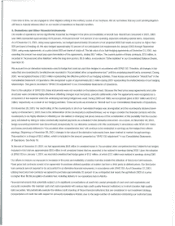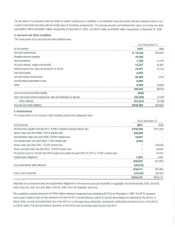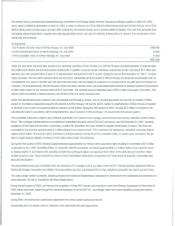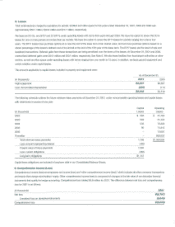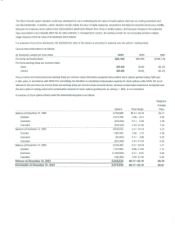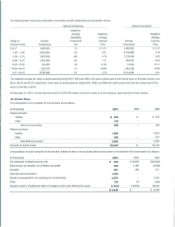Airtran 2001 Annual Report Download - page 26
Download and view the complete annual report
Please find page 26 of the 2001 Airtran annual report below. You can navigate through the pages in the report by either clicking on the pages listed below, or by using the keyword search tool below to find specific information within the annual report.
Notes
to
Consolidated
Financial
Statements
1.
Summary
of
Significant
Accounting
Policies
Basis
of
Presentation
and
Business
Our
consolidated financial statements include the
accounts
of AirTran Holdings, Inc. (AirTran)
and
our
wholly
owned
subsidiaries, including
our
principal
subsidiary, AirTran Airways, Inc. Significant intercompany
accounts
and transactions have been eliminated
in
consolidation.
AirTran Airways, Inc. offers scheduled air transportation of passengers
and
mail, serving short-haul markets primarily in the eastern United States.
Use
of
Estimates
The preparation
of
consolidated financial statements in conformity
with
generally
accepted
accounting principles requires
us
to
make
estimates
and
assumptions
that affect the
amounts
reported in the consolidated financial statements
and
accompanying
notes. Actual results inevitably will differ from
those estimates,
and
such
differences
may
be
material
to
the consolidated financial statements.
Cash,
Cash
Equivalents
and
Restricted
Cash
We
consider
all
highly liquid investments with amaturity
of
three
months
or
less
when
purchased
to
be
cash
equivalents. Restricted cash primarily
represents
amounts
escrowed
relating
to
air traffic liability.
Accounts
Receivable
Accounts
receivable are
due
primarily from major credit
card
processors
and
travel agents.
We
provide
an
allowance for doubtful
accounts
equal
to
the
estimated losses expe<;ted
to
be
incurred
in
the collection
of
accounts
receivable.
Spare
Parts,
Materials
and
Supplies
Spare parts, materials
and
supplies are stated at
the
lower
of
cost
or
market using the first-in, first-out
method
(FIFO). These
items
are
charged
to
expense
when
used. Allowances for obsolescence are provided over
the
estimated useful life
of
the
related aircraft
and
engines for spare parts
expected
to
be
on
hand
at
the
date
aircraft are retired from service.
Property
and
Equipment
Property
and
equipment
is stated
on
the basis
of
cost. Flight equipment is depreciated
to
its salvage values using
the
straight-line
method.
The estimated salvage values
and
depreciable lives are periodically reviewed for reasonableness,
and
revised if necessary. The Boeing 717 (8717) fleet
has asalvage value
of
10 percent.
At
July
1,
2001,
we
revised the useful lives
on
our
8717
fleet,
as
outlined below,
in
order
to
more
accurately reflect
the estimated useful life
of
the
aircraft:
2001
2000
Useful
Life
Useful Life
Airtrames
30
years
25
years
Engines
30
years
25
years
Aircraft
parts
30
years
5years
The effect
of
this
change
for
the
year ended December 31, 2001,
was
to
decrease
our
nel
loss
by
approximately
$0.6
million,
or
$0.01 per share.
In conjunction
with
the 2001 impairment
charge
(see
Note
13),
the McDonnell Douglas
DC-9
(DC-9) fleet
was
written
down
to
its fair market value.
Accordingly, the salvage values
were
revised
to
40
percent,
and
the useful lives were revised
to
range from three
months
to
two
years. In conjunction
with the 2001 impairment charge. the Boeing 737 (8737) fleet
was
written
down
to
its fair market value
and
subsequently retired. Aircraft
rFlrt~
am
depreciated over the respective fleet life
to
asalvage value of five percent.
Other
property
and
equipment
is depreciated over three to 10 years.


